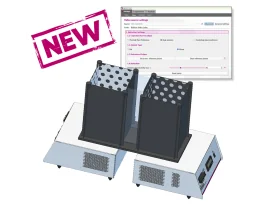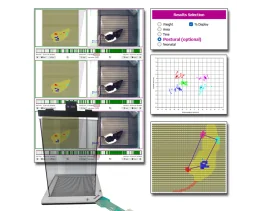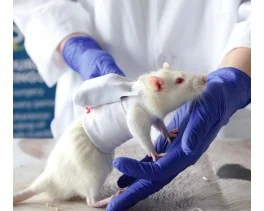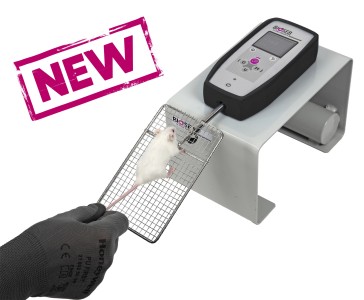Authors
N. Panayotis, M. Pratte, A. Borges-Correia, A. Ghata, L. Villard, et al.
Lab
Faculté de Médecine de La Timone, Marseille, France.
Journal
Neurobiology of Disease
Abstract
Rett syndrome (RTT) is a severe neurological disorder caused by mutations in the MECP2 gene, in which older patients often develop parkinsonian features. Although Mecp2 has been shown to modulate the catecholaminergic metabolism of the RTT mouse model, little is known about the central dopaminergic neurons. Here we found that the progression of the motor dysfunction in the Mecp2-deficient mouse becomes more severe between 4 and 9 weeks of age. We then studied the phenotype of the dopaminergic neurons of the substantia nigra pars compacta (SNpc). We found a major reduction in the number of tyrosine hydroxylase (Th)-expressing neurons, as well as a reduction in their soma size, by 5 weeks of age. We showed that this deficit is not due to apoptosis and that the remaining neurons express a mature dopaminergic phenotype. A reduction in the Th-staining intensity was also found in the caudate-putamen (CPu), the main dopaminergic target for SNpc. We found that the amount of activated-Th (pSer40-Th) is slightly reduced at 5 weeks of age in the Mecp2-deficient mouse, but that this amount is affected more importantly by 9 weeks of age. Neurochemical measurements revealed a significant reduction of dopamine content at 5 and 9 weeks of age in the CPu whereas SNpc contents were preserved. Finally, we found that chronic L-Dopa treatment improved the motor deficits previously identified. Altogether, our findings demonstrate that Mecp2-deficiency induces nigrostriatal deficits, and they offer a new perspective to better understand the origin of motor dysfunction in RTT.
BIOSEB Instruments Used
Grip strength test (BIO-GS3)
Source :
http://www.sciencedirect.com/science/article/pii/S0969996110003402

 Douleur - Allodynie/Hyperalgésie Thermique
Douleur - Allodynie/Hyperalgésie Thermique Douleur - Spontanée - Déficit de Posture
Douleur - Spontanée - Déficit de Posture Douleur - Allodynie/Hyperalgésie Mécanique
Douleur - Allodynie/Hyperalgésie Mécanique Apprentissage/Mémoire - Attention - Addiction
Apprentissage/Mémoire - Attention - Addiction Physiologie & Recherche Respiratoire
Physiologie & Recherche Respiratoire




































 Douleur
Douleur Système Nerveux Central (SNC)
Système Nerveux Central (SNC)  Neurodégénérescence
Neurodégénérescence Système sensoriel
Système sensoriel Système moteur
Système moteur Troubles de l'humeur
Troubles de l'humeur Autres pathologies
Autres pathologies Système musculaire
Système musculaire Articulations
Articulations Métabolisme
Métabolisme Thématiques transversales
Thématiques transversales Congrès & Meetings
Congrès & Meetings 